What indie developers can learn from indie writers
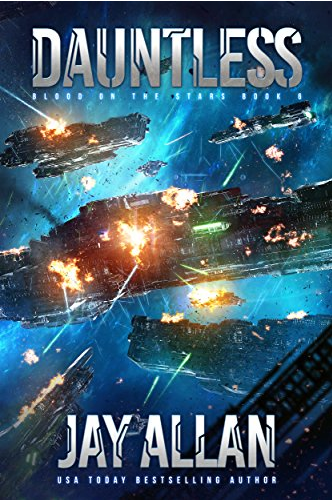
Ask any indie game developer what the secret of indie game marketing is, and you hear almost the same answer from everyone: you need to get into the list of recommendations from Steam or the mobile app store, get press reviews, make your game play a popular streamer . Otherwise, the game in which you have invested a lot of time and effort, simply fail.
But imagine a market in which such recommendations are not applicable. There are no such things as Steam Launch Visibility Round or recommendations in the App Store. What if there is no press, happy to write reviews? And what if instead of 7667 games released on Steam in 2017, more than 100,000 new books were released in the same year? And the total number of books on the market exceeds 4 000 000 titles?
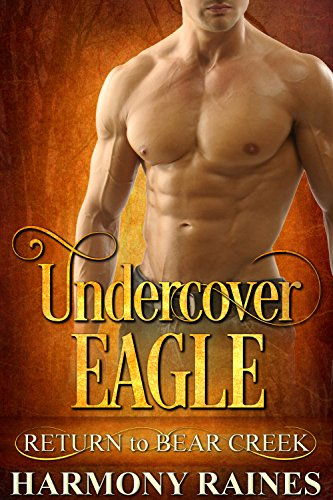
Independent fiction writers can tell us more than just what happened at Bear Creek.
In fact, this is just an apocalyptic script, if you are a fiction writer and publish yourself. For example, on Amazon.com there are no specially supervised pages with "the best new books." Unfortunately, the site only shows the bestseller list, and it is filled with books that have been held there for decades (Harry Potter, Stephen King, etc.). And the worst part is that if you are not published by a large publisher, no one will write about the recently released books.
')
Against these huge limitations, some of the problems of indie game developers look pale. You can decide that the independent career of an independently published writer is hopeless. But surprisingly, the strongest indie found a way to survive in this cruel reality without all the advantages that we have.
Today they often talk about “indipocalypse” in the gaming industry, so I decided to see how other independent creators manage to survive. And it turned out that the world of indie authors consists of marketing strategies that turned out to be surprisingly sophisticated. It seems that the harsh environment is forcing innovations.
If your game did not succeed because of the lack of recommendations or reviews in the press, then you still have a little hope. Let's explore the alternative reality of the indie world. Think of it as an expedition of a botanist who studies the nature of the harsh desert for evolutionary adaptations.

Look at this cute little desert kangaroo jumper. They adapted to the lack of water thanks to the collection of moisture from the seeds. This is so clever.
Foreword
The purpose of this article is to suggest ideas and alternative marketing strategies for indie developers who hope to release commercial games on a solid foundation. If game development is a hobby for you, and you just want to explore the concepts of this industry, then the article is not for you. This post, I do not want to prevent someone from following his creative path. Do what you want. But if you need ideas on how to try to make a living with your creativity so that it does not resemble a roulette game, then you should read this post.
TLDR: actions of indie authors that we should also consider
- They create a base of loyal fans with the help of mailing lists.
- Published a lot and often.
- They write sequels and series so that fans buy not only one of the works.
- Do not deviate too far from what readers expect from the genre.
- They use a special tactic for adjusting to an online store, so that he would recommend their books to prospective fans.
- Conclude partnership agreements with similar authors for the creation of joint works, series and mutual advertising.
Who are the samizdat authors
There have always been authors in the world who wrote and sold books, despite the lack of contracts with one of five major publishers (Random House, Simon & Schuster, etc.). Usually these samizdattsy people chose a genre that was unsuitable for publishers, or their writing skills did not match the publisher's quality bar. But there were business writers who printed and sold books on their own, usually from the trunk of their car.

Some of these books have been traditionally published, others have been published by indie authors. Can you tell the difference? And most readers also can not.
However, after the release of the Kindle and the wide distribution of electronic books, authors can be sold without extra spending on paper printing. Amazon.com’s complete dominance as a book selling platform also means that the samizdat book may be among the same search results as the book of traditional publishers. In response, indie authors have increased their level of quality and complicated marketing to become indistinguishable from traditionally published authors. As a result, thanks to this business model, many indie earns more than the average author who has signed a contract with a traditional publisher.
I will tell you more about how they do it:
They create a base of loyal fans.
Real money indie authors earn regular customers. Loyal fans love their books, write reviews and buy everything (e-books, audio books and even paper copies), simply because they love their author very much. Surprisingly, there are many indie authors who have built such a small but powerful fan base that they make hundreds of thousands of dollars a year. At the same time, they are little known outside the close circle of admirers. These authors have never been on the New York Times bestseller list and have not won literary awards; they have not made films based on their books. But they are prioritized for the people who matter most: for their fans.
The most important tool indie authors use to compile a fan base is email distribution. Emailing is much better than Twitter and Facebook, and allows them to communicate with fans face to face. In addition, mailings allow you to gradually establish links.
To get people to the mailing list, authors usually publish a book on Amazon, reducing its price to zero or 99 cents. This cheap book ends with a cliffhanger. On the last page, the authors post a message: "Download the continuation of this book for free by clicking on the link." The link leads to the website with the subscription form to the electronic newsletter. After registering on the list, readers receive the promised free book.

Here is an example of the last page of many indie books. This is a clear and simple offer to get another free book in the series. By clicking on this link, the reader goes to the subscription page for the newsletter.
When the reader enters the mailing list, the author automatically sends letters that tell about his history and other books written by him. The author also regularly sends other free books to get his fan base located.
When the author releases a new book, he sends out mailing lists. Devoted readers immediately download and almost always write a review on the book on the day of its release, because they are faithful.
What can we learn from this
Create. List. Mailings. Immediately! And use it!
I write a lot about this, so just read my previous posts on this topic.
- Basics of Video Game Email Marketing
- Five reasons why you need to create a mailing list this year
- What Nintendo Power Can Teach Us in Indie Marketing
They write a pile of books
The classic image of the author is a man who has been working on his masterpiece for many years. He leads a monastic way of life in a secluded shack, waiting for a tide of inspiration. He rewrites every sentence until it is perfect. Then, having experienced great suffering, he presents his book to the world. This process is repeated from time to time until it dies, releasing only a few books. (See examples of Harper Lee and Jerome Salinger.)
But for indie authors this does not apply. These guys bake books like pancakes. Some write one per month. In addition to books, they also regularly post blog posts, short stories, and send emails to fans. It’s customary for them to write 9000 or more words a day, every day. They measure their performance in time ZNS, that is, the time of the Ass on the Chair.

The usual results of a successful indie-author.
They have many reasons for this behavior.
No one knows which book will be successful. They can spend time thinking, deconstructing the meaning of literature, and rewriting each book three times. Or just publish three books and see which one of them “shoots”. Usually 20% of their books bring 80% of income. Unfortunately, no one knows which of them will be a hit, so you just have to work further. Watch this wonderful performance: " How I won the lottery ."
In addition, if you write more, then fans will be able to buy more books. This is another reason to create a circle of loyal readers who will buy everything you write.
The authors understand that success will not come overnight after a single book. In samizdat, everyone understands that it is necessary to release at least ten books before hoping to earn a living.
What can we learn
If you find it difficult to become famous, then release the game more and more. Quality is important, but there are other ways to accelerate:
- Trim parts that don't bother anyone. Watch this performance . The developer talks about creating a whole procedurally generated city, which will be just the background for the level.
- Use the code again in new games.
- Do not write your own game engine.
- Be bold in choosing design solutions and just release the game. Instead of reworking all the graphics three times in the process of mastering the skill, release three games, the graphics of each iteration of which will be better and better.
- But, most importantly, stop the expansion. If you have new ideas in the development of the game, write them on paper with the title "Ideas for the sequel."
They write many sequels
One of the reasons indie authors can write so much is because they write books that are part of a series. Due to the presence of ready-made heroes and entourage, they do not have to reinvent the wheel in every book.
The series are also the main marketing strategies of the authors (I talked about this above). The first book of the series on Amazon is always free or costs $ 0.99, the second is free if readers subscribe to the newsletter. If a person has read the first two books and still wants more, then he will most likely buy the rest of the series. These subsequent books are always within 2.99 - 6.99 dollars.
Look, the author of this series of books spent time on the design of the covers, so that it was clear that these are parts of the series, but at the same time they still look unique.
To encourage readers to buy new books of the series, on the last page there is always an advertisement for the next book and a link to the Amazon store. If you've ever watched TV shows on Netflix, then you know how tempting the “Watch the next episode” button is.
Also, the authors sell all the books in the series as a set. The kit has a big discount, because it’s less risky to immediately get the reader’s money than to lose a fan in the middle of a series.
The covers of the series are also specially designed so that their belonging to the series is immediately obvious. The authors do this because readers familiar with the first pair of books and browsing the list of new editions could immediately recognize the new book in the series.
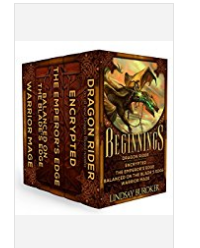
Having written several books in a series, the author can combine them into a set and sell them as a separate product.
What can we learn
- Make the sequels. Indies rarely do this and do not use the full potential of marketing created for the first game. Watch this performance: " Why indie games don't have sequels ."
- One of the advantages of this strategy is that if Steam recommends one of the sequels of the game (say, let's call it Zombie Horde RTS part 3: The revenge ), then there is a good chance that players who know about you through the sequel will return and download the previous ones two games.
- Make the promotional materials, such as the covers of the boxes look like they are part of a series. You can use the same structure, the same color scheme or frame.
They do not violate the limitations of the genre
Authors write in very specific genres. For example, there are only a few fantasy subgenres: high fantasy, low fantasy, urban fantasy, historical fantasy, new otherworldly (New Weird) and paranormal phenomena.
It turns out that fans of high fantasy rarely read urban fantasy. These are two completely different species. Indie authors have long noticed that if they expand boundaries and mix genres, sales will suffer from this. In fact, some subgenres are so specific that there are mandatory and prohibited elements in them. For example, in a romantic book there should be a central love story, risk and struggle are present, but the central love story always ends with unconditional love, and the two main characters should never cheat on each other.
More authors seek to ensure that the covers of books contain a very complex, but unobtrusive combination of characters, clearly giving the reader to understand to which subgenre the book belongs.
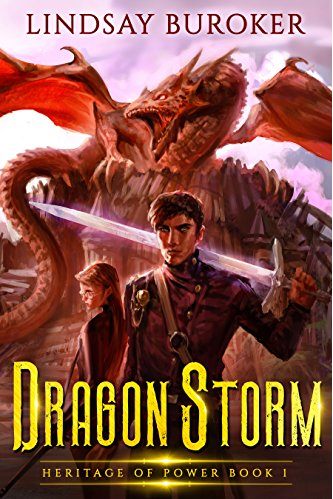
A beautiful sword? There is. The Dragon? Still would. Without a doubt, this is a fantasy sub-genre book of Sword and Sorcery.

On the covers of science fiction and fantasy books of the subgenre "military fantasy" must be exploding spaceships.
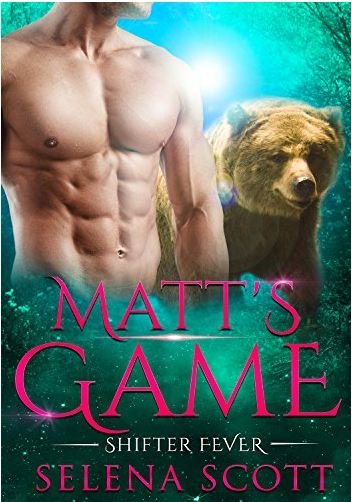
And in the romantic books of any subgenre there should always be a man's chest. Always male chest (head optional).
What can we learn from this
- Try to stick to one genre in several games. Of course, if you are indie, you can realize any whim. But when you release the metro, then try roguelike, and then FPS, then it comes at a price. A large percentage of people download the game because of its genre, and not because they like you. If you switch to a different genre, they will not follow you. But if you release a series of several games of the same genre, you can expect more predictable results. Remember that it is more expensive to find new customers than to communicate with existing ones.
- Understand that trying to invent a new genre is very risky. They require a lot of experimentation, and the genre does not yet have an established fan base.
- If you stick to one genre, then you can use the technologies created for previous games. This speeds up development and allows you to release more games.
- Look at the overall strategy of Spiderweb Software to understand what “commitment to the genre” is.
- Watch a presentation on the rigor of the Hidden Objects genre. Even if you think games of this genre are stupid, then it’s worth a look: this report changed my prejudices about games more than any other performances.
- Take for example the genre of the simulator: although the covers of such games have already become something of a meme, they very quickly let the players know what these games are about:

Note: I know what you want to say: “I started indie games because I wanted to open up creatively!” Imitate director Stephen Soderbergh, who is known for alternately producing complex and pop films. He calls this process "one for me, the second for fans." You can do the same.
They use the functionality of the “Also buy” section.
Amazon’s largest bookseller has nothing like Steam Launch Visibility Round or the App Storepage recommendation page. There is no curation in the store, so all ratings and recommendations are based on algorithms. Instead of focusing efforts (and anxiety) on recommending them, indie authors spend a lot of time trying to control the Amazon algorithm that forms the section “Buyers who bought this product also bought ...”
Indie authors realized that a significant amount of their new traffic originated from readers like them. The section “Also buy” is calculated automatically, based on tracking the behavior of the buyer. This section is such a significant source of traffic that indie writers create strategies to make their books appear in the correct “Also Buy” list. For example, if an author writes romantic and sci-fi books, he needs to ensure that romantic books do not appear in the “Also Buy” section on pages with sci-fi books.

Here is an example of a well-formed “Also Buy” section. Notice that on four of the seven covers of the books there is a dragon, and on five of the seven there is some kind of medieval weapon. And there certainly is not a single male breast.
To avoid such “pollination”, the authors are very careful when releasing books; they notify fans only of the genre in which they released the book. The authors know what their fans want because they use email marketing software to tag them based on previously purchased books.
The authors even go so far as to prohibit members of their family from buying their books at the time of release, because their relatives have a more varied purchase history and they can blur the “Also buy” section.
The authors even publish different genres under different pseudonyms, so that they would not have to worry about the lovers of romance, who were confused by the book on dragons recommended by them.
But the most powerful tactic for creating a clean “Also Buy” section is advertising your books on Facebook among fans of authors like them.
What can we learn from them
In most app stores there is an analogue of the “Also Buy” section. When used properly, it can become an important source of traffic after the game is released.
However, we need to be more careful to keep the section clean. Look at the “More Like This” section taken from the pretty popular and well-known indie game page on Steam.
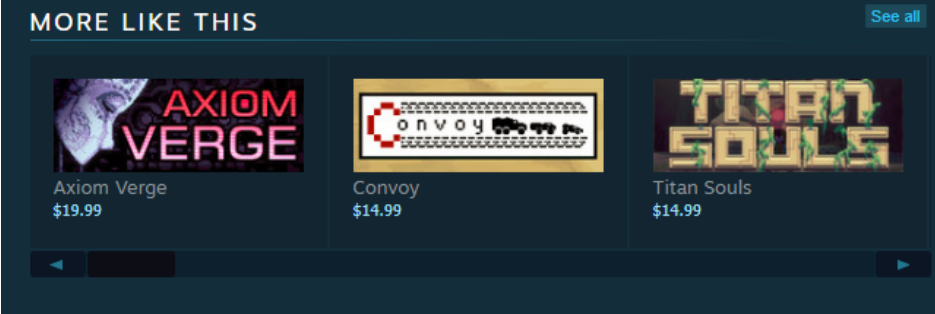
Recommendations include a metro side game, a car combat game and a top-view action RPG. None of these games belongs to the genre with which the game itself is associated.
- To clean up the recommendations section, enter into a partnership agreement with game developers that are similar to yours. Combine yours and their games in the kit. You can also advertise their games on your mailing list to promote yours in theirs.
- Use Facebook targeting to show ads to game developers of your genre.
- Stick to one genre so Steam knows what your games are about.
- Put your Steam tags very neatly and ask your subscribers to put certain tags.
- However, do not select the “Indie” tag, because it does not belong to the genre.
Authors work together
The indie book community is as close as the indie game developer community. However, indie writers have taken another step in their relationship and create many joint marketing strategies.
One of the most popular strategies of many authors is to add a book to a set of books. At the time of release of the set, the authors make a huge discount on this set, as if selling their own private Humble Bundle.
To promote this superset, each author recommends it to his mailing list. The result is beneficial for everyone, because fans of one author are likely to become fans of another. Authors on both sides usually notice a huge jump in the number of subscribers due to cross-advertising.
Even if the authors do not have a joint set of books, they agree to advertise each other’s books. For example, they can arrange to send emails to everyone on the list with this text: “If you liked my book X, you might also like my friend’s new book Y.” Another author does the same.
Sometimes authors even write books together. For example, the American Demon Hunters Sacrifice book was written by four authors during a train ride to New Orleans (Indie Train Jam Style). This book alone had the marketing “muscles” of four authors calling on its readers to buy it.

What can we learn from them
- Indie developers can implement joint projects only to a certain extent. Derek Yu's next UFO 50 game will be a “buffet” in a retro style in which four indie developers will contribute to the game. I hope that every indie who participates in UFO 50 has created their own mailing list and will encourage their fans to buy it.
- Even if you are not a sucessful indie, try creating a game with several other developers who have a level approximately equal to yours.
- Indie developers like to embed characters from other games as secret unlockable characters into their games. This is a good first step, but we need to cooperate more, using greater marketing opportunities.
- Don't be afraid to advertise other game developers on your mailing list. If the games are close in genre and quality, then it is quite possible to try to combine efforts.
Things that indie authors have refused because they don’t work
- Twitter - although many authors still use it to communicate with each other, this is an unreliable source of new customers and it doesn’t show itself well when it comes to convincing customers to buy authors' books.
- A tour in support of the book - although this is the main support for authors and celebrities published in the traditional way, traveling to book-signing sessions is a waste of time that could be spent writing.
- Trade shows and book festivals are like touring. The number of people with whom you can talk in one day of such events is not large enough to discourage the time, money and energy spent on participation. In addition, indie writers are poorly known outside the narrow circle of admirers, so they do not attract people who do not yet know them.
Similar traits of indie authors and indie developers
Although our marketing strategies are very different, there are some similarities that are important to us and indie authors.
- The concerns of the only dominant platform - for indie author Amazon.com - are like Steam for us. This is a powerful organization that gives most of the earnings of any indie author, but some fear too much dependence on the company, and the possibility of the loss of their business if Amazon starts to be hostile to petty indie. The authors use the term “Going Wide” to describe a strategy for selling books in several online stores, not just in Amazon.
- The recent golden era - after the release of Amazon Kindle in 2007 and until about 2013, the e-book market was on the rise. Pioneers could lay out any book and it was sold. Many authors found anything that was enough words to at least approximately resemble a book. These lucky ones had the advantage of an innovator and received a great reward for him.
- The growing up market - the stories of overnight rich writers, who were the first generation of indie authors of electronic books, led to the emergence of newcomers on the market. The quality grew and the strategy of throwing in any old book stopped working. Some authors fear that the old proven and working mailing list strategies may lose their effectiveness and they will have to look for a new antidote. Authors study additional sources of income, for example, creating audio versions of their books or translating them into other languages.
- Recycling - while we, the developers, are worried about periods of crunch, samizdat authors are worried about the expectations of quickly creating a multitude of books. Will they disappoint their fans by slowing down a little? Burnout becomes a frequent problem.
- The impostor syndrome - all creative people feel it, and the world of indie writers is no exception. We need to defeat him, because he prevents us from releasing games and demanding well-deserved payment.
Some more facts about indie authors
The usual price of a samizdat e-book: $ 2.99-4.99. The first in the series of books- "teasers" cost from zero to $ 0.99.
Successes and authorities in the world of indie
- Joanna Penn
- Hugh Howey
- Andy Weir (author of The Martian)
- CJ Lyons
- Lindsay Buroker
Main platforms
- Amazon.com
- Apple iBooks
- Kobo.com
- Bookbub (quite an interesting business model, very reminiscent of the Humble Bundle)
Good podcasts about indie book publishing business
Even if you are not going to write a book, these podcasts have interesting marketing ideas that can be adapted to the game:
- The Creative Penn Podcast
- The Science Fiction & Fantasy Marketing Podcast
- Mark Dawson's Self Publishing Formula
Good books about indie books
- Write Publish Repeat by David Wright, Johnny B. Truant, and Sean Platt
- How to Market a Book by Joanna Penn
An analogue of Steamspy for samizdat authors:
Author Earnings
If you choose a single indie authors lesson, then you should stop at creating a mailing list. I wrote a book in which there are more details than in this article, and also added a set of readable 87 emails that can be sent. Download the book here.
Source: https://habr.com/ru/post/347694/
All Articles
